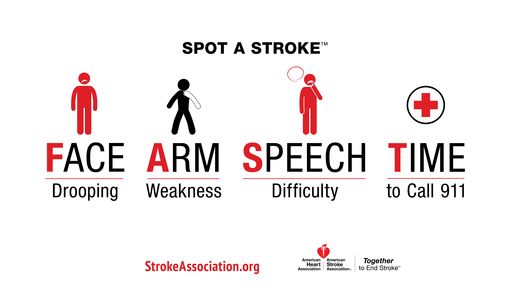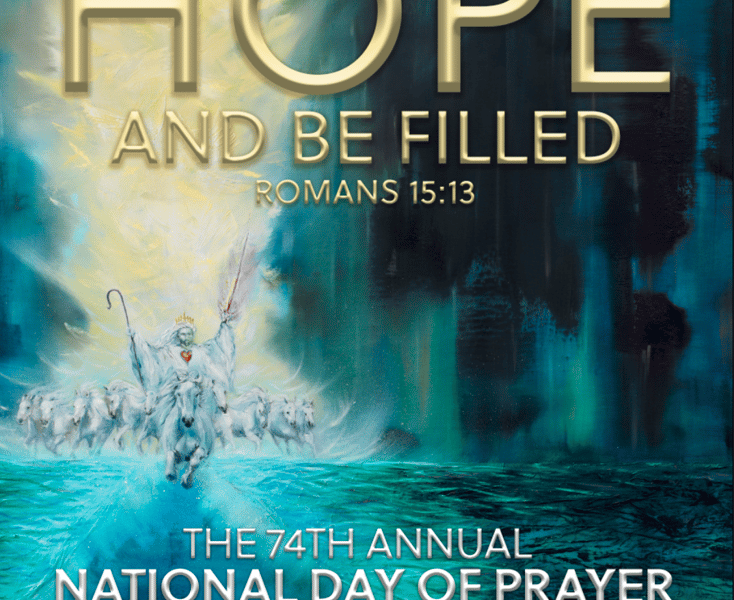20 things you didn’t know about stroke, that may save a life – Stroke is a leading cause of preventable death, but lack of awareness, education and resources are major barriers to stopping it. During May, American Stroke Month, the American Stroke Association, the world’s leading voluntary organization devoted to saving people from stroke, reveals 20 important things you probably didn’t know about stroke, in recognition of its 20th Anniversary:
20 things you didn’t know about stroke, that may save a life
Every May is American Stroke Month and the American Stroke Association’s celebrated it’s 20th anniversary in 2018.
- There are different types of strokes: ischemic, hemorrhagic and transient ischemic attack (TIA). An ischemic stroke is a clot-caused blockage in an artery to the brain, while a hemorrhagic stroke occurs when an artery ruptures in the brain. A TIA or “mini stroke” is caused by a temporary blockage. Eighty-seven percent of all strokes are ischemic.
- During a stroke, nearly 120 million brain cells die every hour. Compared with the normal rate of cell loss in brain aging, the brain ages 3.6 years each hour without treatment. The sooner the patient gets medical care, the better their chances of recovery.
- About 66 percent of the time, someone other than the patient makes the decision to seek treatment – recognizing the warning signs and sudden symptoms of stroke to receive treatment fast, could help save a life.
- F.A.S.T. is an acronym used to teach the most common warning signs and sudden symptoms of stroke. F.A.S.T. stands for (F) face drooping, (A) arm weakness, (S) speech difficulty, (T) time to call 9-1-1. Less than half of the population is aware of the signs.
- Stroke symptoms can also include sudden numbness, sudden trouble seeing in one or both eyes, sudden severe headache with no known cause and sudden trouble walking.
- Calling 9-1-1 and arriving at the hospital in an ambulance is the fastest way to get treated quickly during a stroke emergency. Driving to the hospital is a common mistake people make, that can result in longer wait times before the patient receives medical care.
- Patients who have an ischemic stroke, may have a treatment window for mechanical clot removal within six hours to up to 24 hours in certain patients with clots in large vessels.
- Alteplase (also known as tPA) is a drug used to dissolve a blood clot that causes stroke. Stroke patients who arrive at a hospital within 90 minutes of symptom onset and qualify to receive tPA are almost 3 times more likely to recover with little or no disability.
- TeleStroke is videoconferencing, similar to Facetime and Skype, connecting patients with neurological experts separated by distance. TeleStroke Units are increasing access to acute stroke care in rural areas and improving patient outcomes.
- Having a stroke increases the risk of a second one (1 in 4 survivors have another stroke). Prevention is crucial because second strokes can be more debilitating than first strokes.
- In some ischemic stroke cases, the cause is unknown (cryptogenic stroke). It’s a challenge to prevent a second stroke, when the cause of the first one is unknown. The patient should work with their healthcare team to find the root cause.
- Stroke survivors stopping their aspirin regimen can up their risk of having another stroke, possibly due to increased clotting levels from the loss of aspirin’s blood-thinning effects. Following an aspirin regimen can help prevent stroke in some survivors.
- First-ever ASA rehabilitation guidelines call for intensive, team approach. For the first three months after a stroke, the brain is ready to learn. This ability for our brains to adjust is known as neuroplasticity and it plays a crucial role in recovery.
- Get With The Guidelines®-Stroke is an in-hospital program that promotes adherence to the latest scientific guidelines to improve quality of stroke care. The program has expanded from 24 hospitals in 2003 to more than 2,000 hospitals to-date.
- In the Stroke Belt, an 11-state region in southeast U.S., the risk of stroke is 34 percent higher for the general population.
- More strokes are happening to people in their 30s and 40s.
- High blood pressure is the most common controllable cause of stroke. Recent guidelines redefined high blood pressure as a reading of 130/80 mm Hg or higher. A normal reading would be any blood pressure below 120/80 mm Hg and above 90/60 mm Hg in an adult.
- Nearly half of all adults in the U.S. (an estimated 103 million) have high blood pressure.
- Other stroke risk factors: obesity, diabetes, cholesterol, smoking and family history.
- Eighty percent of strokes are preventable. Eating healthfully, being physically active and controlling risk factors are important lifestyle changes that can help prevent and beat it.

F.A.S.T. infographic with stroke warning signs: Face drooping, Arm weakness, Speech difficulty, Time to call 9-1-1. Strokeassociation.org
“We must aggressively continue our efforts to reduce stroke, especially in multicultural communities and to reach people at younger ages,” said Mitchell S.V. Elkind, M.D., a professor of Neurology and Epidemiology at Columbia University and chair of the American Stroke Association. “If people are not aware of how to prevent, treat and beat stroke, they can’t take advantage of the progress made over the last twenty years to save lives.”
The American Stroke Association’s Together to End Stroke® initiative continues to expand critical awareness of stroke, in part thanks to national sponsors Medtronic and Bayer® Aspirin.
To learn more about stroke, visit StrokeAssociation.org.
About the American Stroke Association
The American Stroke Association is devoted to saving people from stroke — the No. 2 cause of death in the world and a leading cause of serious disability. We team with millions of volunteers to fund innovative research, fight for stronger public health policies and provide lifesaving tools and information to prevent and treat stroke. The Dallas-based association officially launched in 1998 as a division of the American Heart Association. To learn more or to get involved, call 1-888-4STROKE or visit StrokeAssociation.org. Follow us on Facebook and Twitter.
The American Heart Association/American Stroke Association receives funding mostly from individuals. Foundations and corporations donate as well, and fund specific programs and events. Strict policies are enforced to prevent these relationships from influencing the Association’s science content. Financial information for the American Heart Association, including a list of contributions from pharmaceutical companies and device manufacturers, is available at http://www.heart.org/corporatefunding.
World Stroke Day is held annually on October 29.
Press Release compliments of American Heart Association / American Stroke Association
About the Author
Discover more from Courageous Christian Father
Subscribe to get the latest posts sent to your email.


